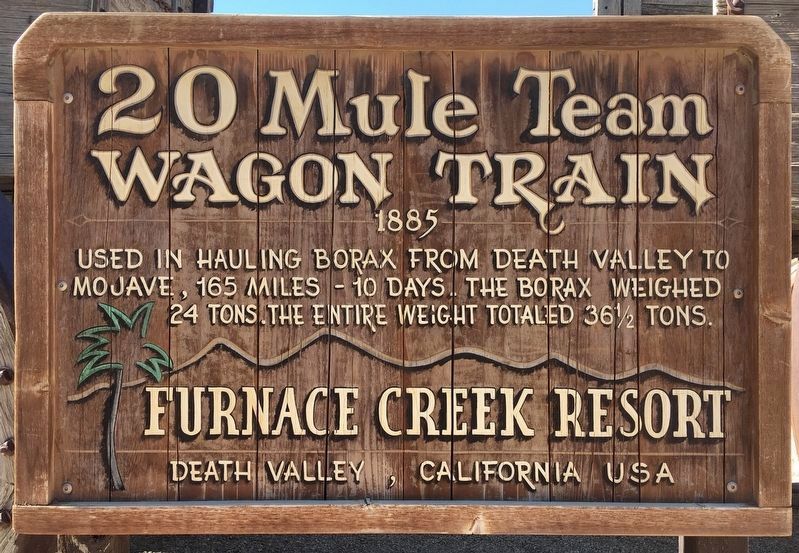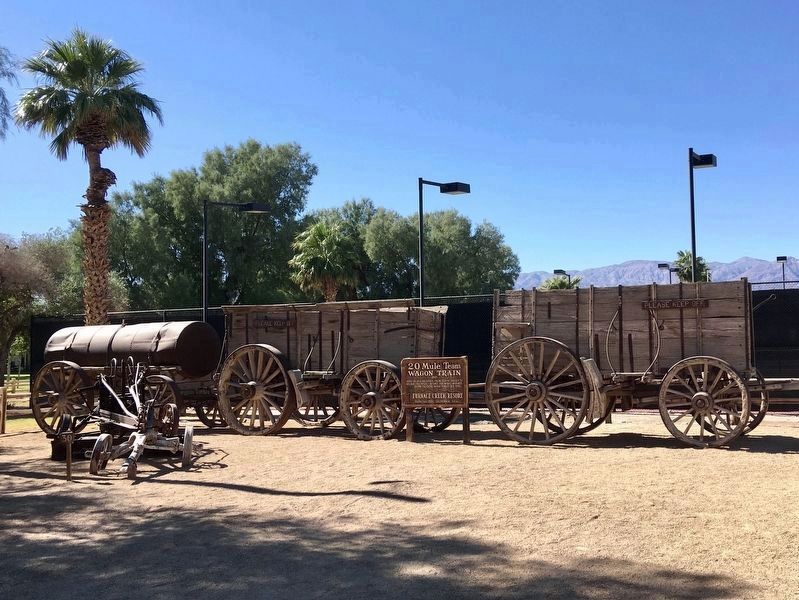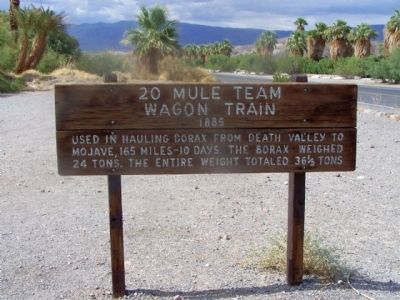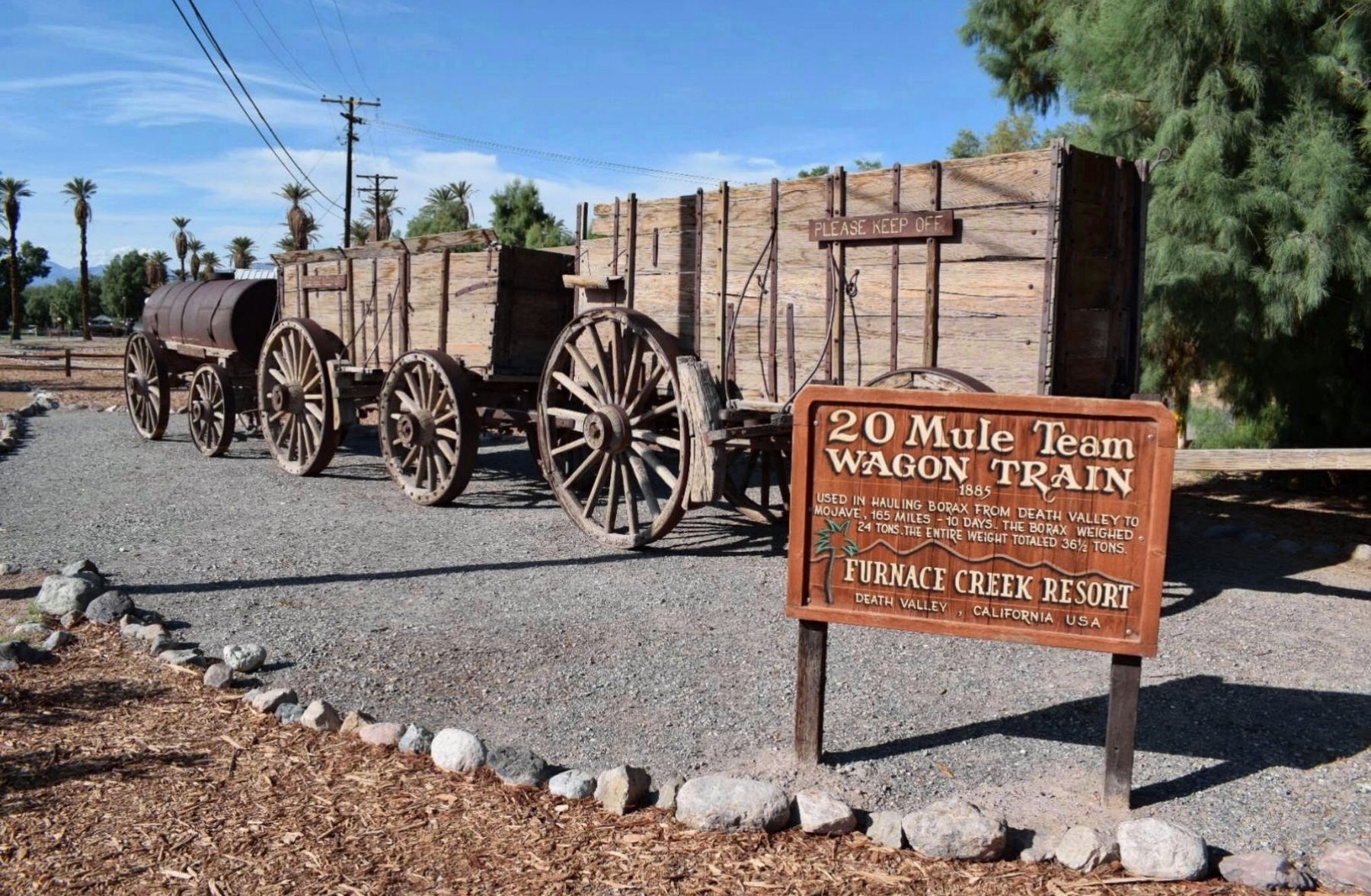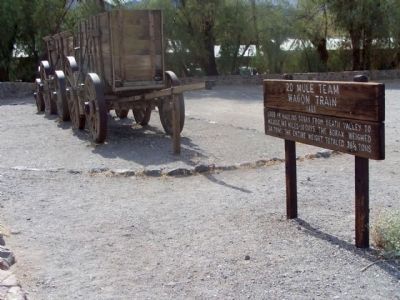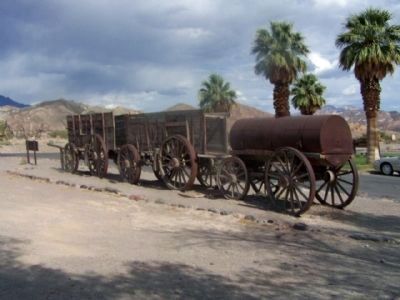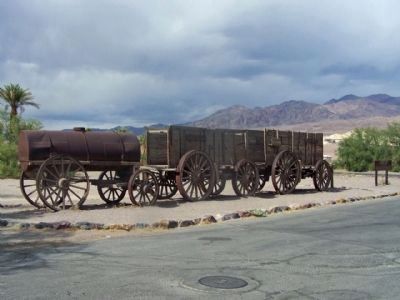Furnace Creek in Death Valley National Park in Inyo County, California — The American West (Pacific Coastal)
20 Mule Team Wagon Train
1885
Erected by Furnace Creek Resort.
Topics. This historical marker is listed in these topic lists: Industry & Commerce • Roads & Vehicles.
Location. 36° 27.41′ N, 116° 52.061′ W. Marker is in Death Valley National Park, California, in Inyo County. It is in Furnace Creek. Marker can be reached from California Route 190, one mile north of Badwater Road, on the left when traveling north. Located behind the ranch museum. Touch for map. Marker is in this post office area: Death Valley CA 92328, United States of America. Touch for directions.
Other nearby markers. At least 8 other markers are within 2 miles of this marker, measured as the crow flies. Old Dinah (within shouting distance of this marker); Furnace Creek Ranch, Death Valley (about 300 feet away, measured in a direct line); Stephen Tyng Mather (approx. 0.4 miles away); Death Valley 49ers Gateway (approx. one mile away); Old Harmony Borax Works (approx. 1.6 miles away); Borax (approx. 1.6 miles away); White Gold (approx. 1.7 miles away); Twenty Mule Teams (approx. 1.7 miles away). Touch for a list and map of all markers in Death Valley National Park.
More about this marker. The wagons have been moved away from the main highway, to the ranch museum. The name of Furnace Creek Ranch has been changed to The Ranch At Death Valley, by the new owner, Xanterra Parks & Resorts.
Regarding 20 Mule Team Wagon Train. For more than a century, the 20 Mule Team has been a symbol of the borax industry — on product labels, in history books, and on television. The status is well-earned; mule teams helped solve the most difficult task that faced Death Valley borax operators — getting the product to market.
The mule teams pulled loads weighing up to 36 tons, including 1,200 gallons of drinking water. The rear wagon wheels were 7 feet high, and the entire unit with mules was more than 100 feet long.
Borax has a wide variety of uses. It is a component of many detergents, cosmetics, and enamel glazes. It is also used to make buffer solutions in biochemistry, as a fire retardant, as an anti-fungal compound for fiberglass, as an insecticide, and as a flux in metallurgy.
Related markers. Click here for a list of markers that are related to this marker. — 20 Mule Team routes.
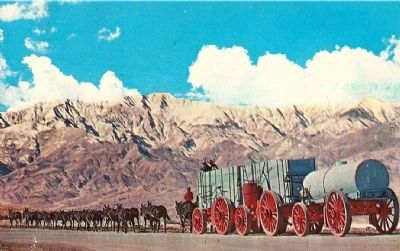
Ferris H. Scott, Santa Ana, Ca. - Western Resort Publications. Santa Ana, Ca. Color by Josef Muench
8. Death Valley National Monument, California
A typical twenty-mule team borax outfit in the foreground with the majestic Telescope Peak looming up in the background some 11,049 feet above sea level. The base of this mountain is below sealevel and it is the highest point in the Panamint Range.(Syd Whittle Collection)
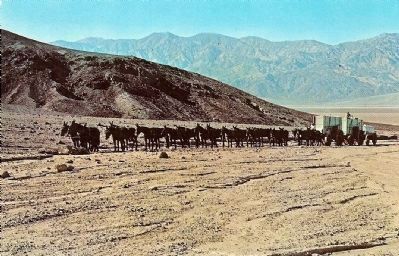
Death Valley Natural History Assoc-Decker Press, Inc. Photo by Warren Hill
9. Vintage Postcard - Typical Twenty Mule Team Outfit
During the 1880's, the twenty mule teams hauled borax from the refinery at Harmony Borax Works to the railroad at Mohave, California, 165 miles away. The twenty mule teams hauled loads of 36 1/2 tons and made the trip to Mojave in 10 days, maintaining almost timetable precision. The triumph of the twenty mule teams over the harsh desert was tremendous, but brief. In 1888 the great wagons and the twenty mule teams made their last trip out of Death Valley.
Credits. This page was last revised on August 20, 2023. It was originally submitted on June 21, 2010. This page has been viewed 3,445 times since then and 62 times this year. Last updated on November 12, 2020, by Craig Baker of Sylmar, California. Photos: 1, 2. submitted on November 12, 2020, by Craig Baker of Sylmar, California. 3. submitted on June 21, 2010, by Mike Stroud of Bluffton, South Carolina. 4. submitted on March 16, 2018, by Craig Baker of Sylmar, California. 5, 6, 7. submitted on June 21, 2010, by Mike Stroud of Bluffton, South Carolina. 8. submitted on June 20, 2010, by Mike Stroud of Bluffton, South Carolina. 9. submitted on September 29, 2008, by Syd Whittle of Mesa, Arizona. • J. Makali Bruton was the editor who published this page.
